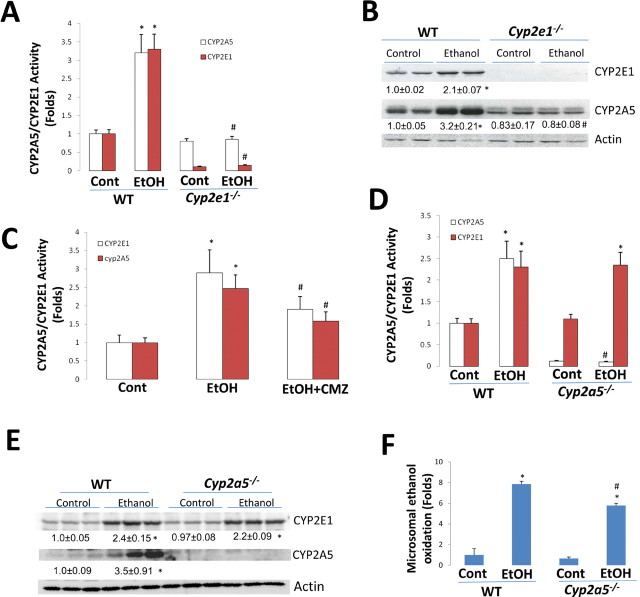Fig. 1.
Induction of CYP2E1 and CYP2A5 by chronic ethanol feeding in WT, Cyp2e1 –/–, and Cyp2a5 –/– mice. After 3 weeks of ethanol feeding, induction of CYP2E1 and CYP2A5 was measured as described in Materials and Methods section. (A) Activities of CYP2E1 and CYP2A5 in WT and Cyp2e1 –/– mice. (B) Western blotting analyses for CYP2E1 and CYP2A5 in WT and Cyp2e1 –/– mice. *p < 0.05, compared with Cont group; #p < 0.05, compared with WT EtOH group. Cont, Control; EtOH, Ethanol. (C) Activities of CYP2E1 and CYP2A5 were inhibited by CMZ. *p < 0.05, compared with Cont group; #p < 0.05, compared to EtOH group. (D) Activities of CYP2E1 and CYP2A5 in WT and Cyp2a5 –/– mice. *p < 0.05, compared with Cont group; #p < 0.05, compared with WT EtOH group. (E) Western blotting analyses for CYP2E1 and CYP2A5 in WT and Cyp2a5 –/– mice. *p < 0.05, compared with Cont group. (F) Ethanol oxidation in microsomes isolated from WT and Cyp2a5 –/– mice fed dextrose or ethanol liquid diet. *p < 0.05, compared with Cont group; #p < 0.05, compared with WT EtOH group.

